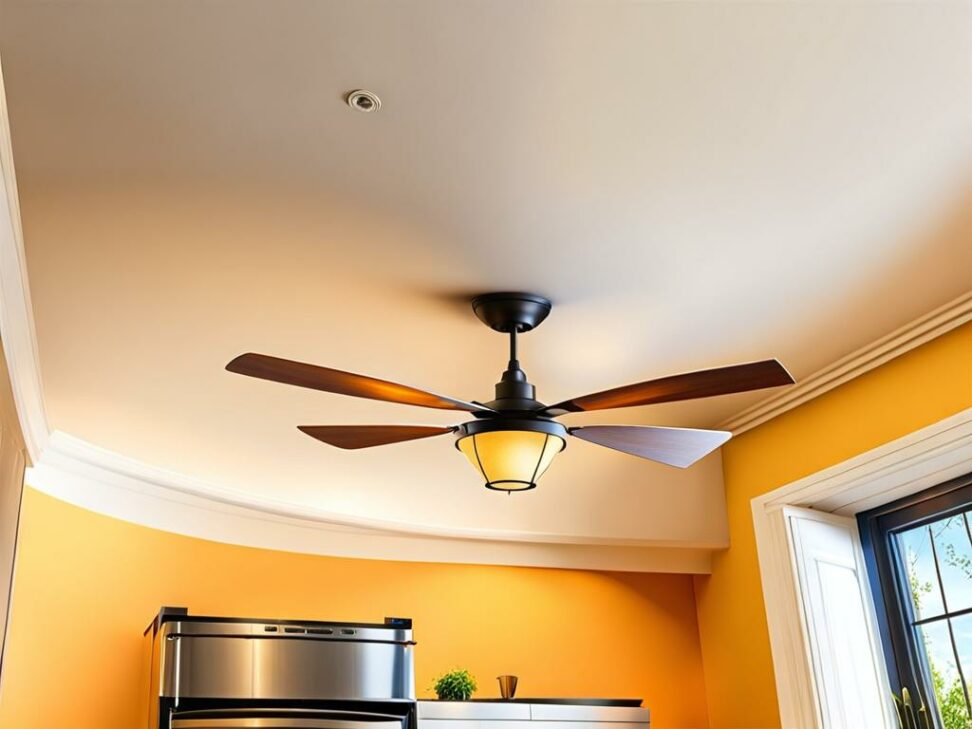The Complete Guide to Installing Kitchen Ceiling Fans and Lights
Kitchen ceiling fans with lights are a popular choice for providing both air circulation and illumination in cooking spaces. But transforming your kitchen with these stylish and functional fixtures requires proper planning and installation. This comprehensive guide will take you through the entire process, from selecting the right equipment to wiring and mounting your new kitchen ceiling fan and lighting.
We'll cover the different types of kitchen ceiling fans, sizing guidelines, electrical requirements, step-by-step installation, and safety tips. With the information in this guide, you'll be able to enhance your kitchen with the perfect ceiling fan and lighting to meet your needs.
Choosing the Best Kitchen Ceiling Fan and Lighting for Your Space
Kitchen ceiling fans come in several designs, ranging from sleek flush mounts to eye-catching pendant lights. Consider the size and layout of your kitchen as well as your decor style as you choose the perfect option.

Types of Kitchen Ceiling Fans and Lights
Flush mount fans and lights fit flush against the ceiling for a contemporary, streamlined look. They come in simple dome styles as well as more decorative shapes with brushed nickel or chrome finishes.
Pendant lights suspend elegantly from the kitchen ceiling to provide both task lighting and ambiance. Mini-pendants work well over islands and counters while large statement pendants can be the focal point over a dining table.
For drama and elegance, chandeliers make a striking statement with their elaborate tiers of crystal and lighting. More lightweight modern chandelier options work in contemporary kitchens.
Ceiling fans with integrated lighting combine air circulation from the rotating blades with built-in downlighting or uplighting. The fan and light fixtures are designed to coordinate.
Choosing the Right Size
Pick a kitchen ceiling fan size in proportion to your room. Measure your kitchen's square footage and refer to the manufacturer's recommendations:
- Small kitchens up to 75 sq ft: Opt for fan blade spans up to 36 inches.
- Medium kitchens 75-150 sq ft: Blade spans of 42-46 inches are ideal.
- Large kitchens: Go for blade spans of 52-54 inches or larger.
Other Factors to Consider
Assess your room layout, ceiling height, lighting needs, and style preferences as you choose the perfect kitchen ceiling fan and lighting:
- Ceiling height. Fans should hang at least 7 feet above the floor.
- Room layout. Pendant lighting works well over islands and dining areas.
- Task vs. ambient lighting. Add flush mounts for task lighting over countertops.
- Your budget for the fixtures and installation.
- Design style. Pick finishes and styles that match your kitchen decor.
Preparing for Installation
Installing overhead fans and lighting involves electricity, so safety should be your first concern. Verify you have adequate electrical service and understand your home's wiring before proceeding.
Electrical Requirements
Your kitchen ceiling fan should have a dedicated circuit with ample capacity. Check the amp rating and wattage requirements of your new fan and lighting and inspect your electrical panel.
For pendant lights, chandeliers, and ceiling fans with lighting, the fixtures should be wired to a lighting circuit, while the fan uses a separate 120-volt circuit.
Tools and Materials
Have the following tools and materials on hand before beginning the installation:
- 6 foot ladder
- Wire strippers
- Electrical tape
- Screwdrivers
- Mounting bracket and hardware
- Wire nuts
Refer to the installation guide that comes with your new ceiling fan and lighting for any additional supplies needed.
Step-by-Step Installation Guide
With proper planning and preparation complete, it's time to install your new kitchen ceiling fan and lighting. Follow these steps:
Turn Off Power at the Breaker
Start by shutting off power to the kitchen ceiling light circuit at your home's main electrical panel. Flip the appropriate breaker to the "off" position.
Removing the Old Light Fixture
If you're replacing an existing kitchen ceiling light, take it down by unscrewing the mounting screws and disconnecting the wiring.
Mounting the New Bracket
Secure the new mounting bracket anchored to a ceiling joist or blocking. Use the manufacturer's mounting bolts and instructions.
Hanging and Wiring the New Fixture
Raise the new ceiling fan or light into place and mount it securely to the bracket following the guide. Connect the wires, ensuring proper polarity and grounding.
Finishing Touches
Once assembly is complete, install light bulbs, restore power, and test the fan and light controls. Your stylish new kitchen ceiling fixture is ready to enjoy!
Keep these electrical safety guidelines in mind during the installation:
- Work with a fiberglass ladder to avoid conductivity.
- Have someone available to assist you.
- Use extreme caution when working with wiring.
- Connect copper grounding wire first for safety.
With the right ceiling fan and lighting selected for your kitchen and proper installation, you can enjoy the stylish illumination, airflow, and ambiance of your new fixtures for years to come!